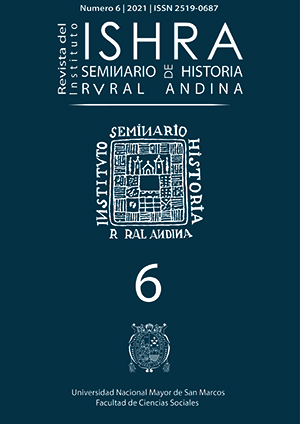The tears of the sun
Andean religiosity in small-scale gold mining in South America
DOI:
https://doi.org/10.15381/ishra.n6.18462Keywords:
Andean religiosity, gold, small-scale miningAbstract
The purpose of this article is to characterize the continuity of Andean religiosity in small-scale gold mining areas in Bolivia, Colombia, Ecuador and Peru. Miners and their families are characterized as a floating population and as organized crime, and governments do not have a cultural understanding of their future. However, they have religious experiences that are interrelated and juxtaposed as part of Andean culture. I argue that Andean animism, where pachamama is the reproductive field of life and death, has its counterpart in mining areas with a vein of gold. Ethnohistory indicates that a vein of gold was like a huaca and the miner, a pilgrim who symbolically sought the tears of the sun. Five hundred years after ethnohistorical sources, contemporary ethnography understands the presence of the Gringa as a spirit that has a strong impact on natural phenomena, riches, infatuations, beatitudes and punishments for miners in their daily life, as well as ritual evocation of mining as a pilgrimage to gather the tears of the sun.
Downloads
Downloads
Published
Issue
Section
License
Copyright (c) 2021 Víctor Hugo Pachas

This work is licensed under a Creative Commons Attribution 4.0 International License.
AUTHORS RETAIN THEIR RIGHTS:
a. Authors retain their trade mark rights and patent, and also on any process or procedure described in the article.
b. Authors retain their right to share, copy, distribute, perform and publicly communicate their article (eg, to place their article in an institutional repository or publish it in a book), with an acknowledgment of its initial publication in the ISHRA, Revista del Instituto Seminario de Historia Rural Andina.
c. Authors retain theirs right to make a subsequent publication of their work, to use the article or any part thereof (eg a compilation of his papers, lecture notes, thesis, or a book), always indicating the source of publication (the originator of the work, journal, volume, number and date).






